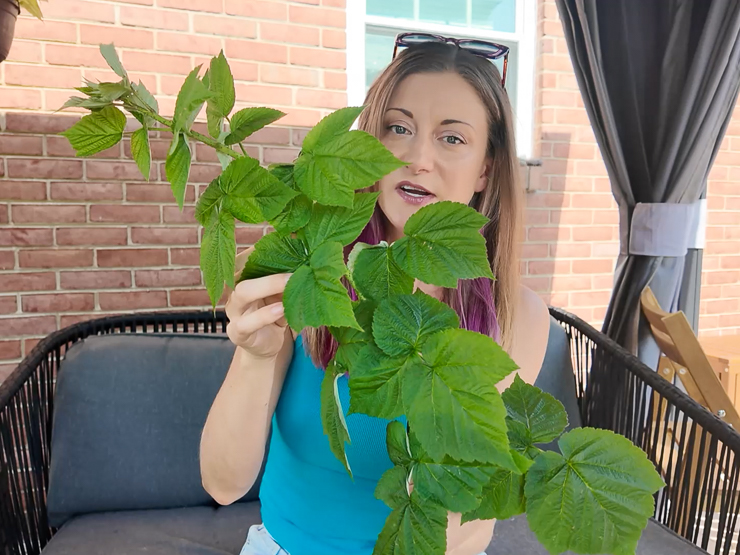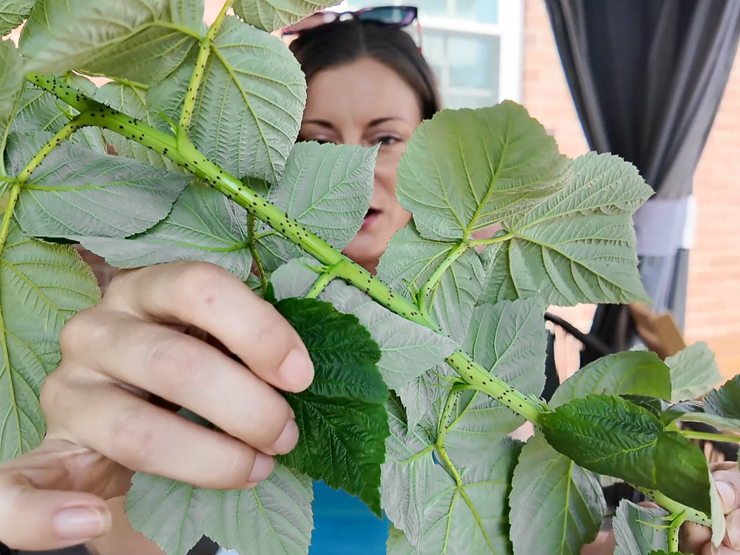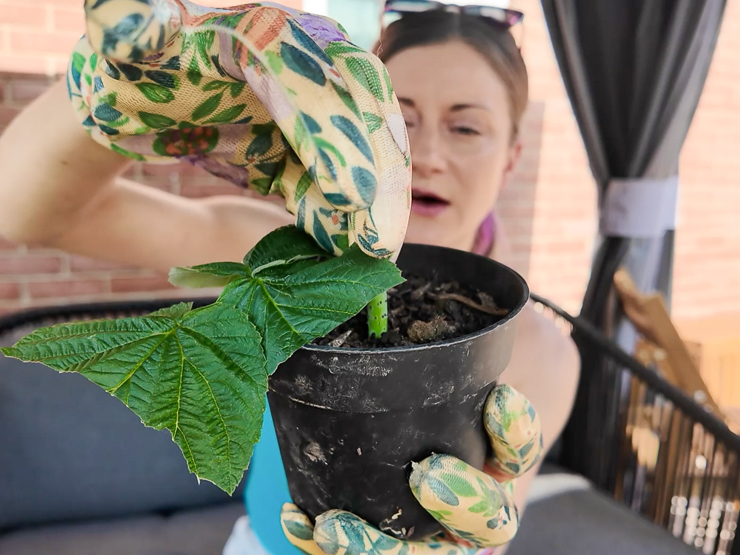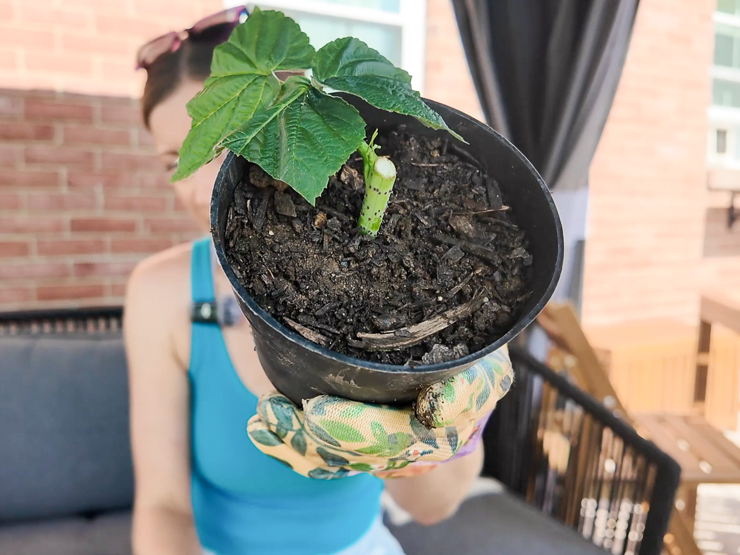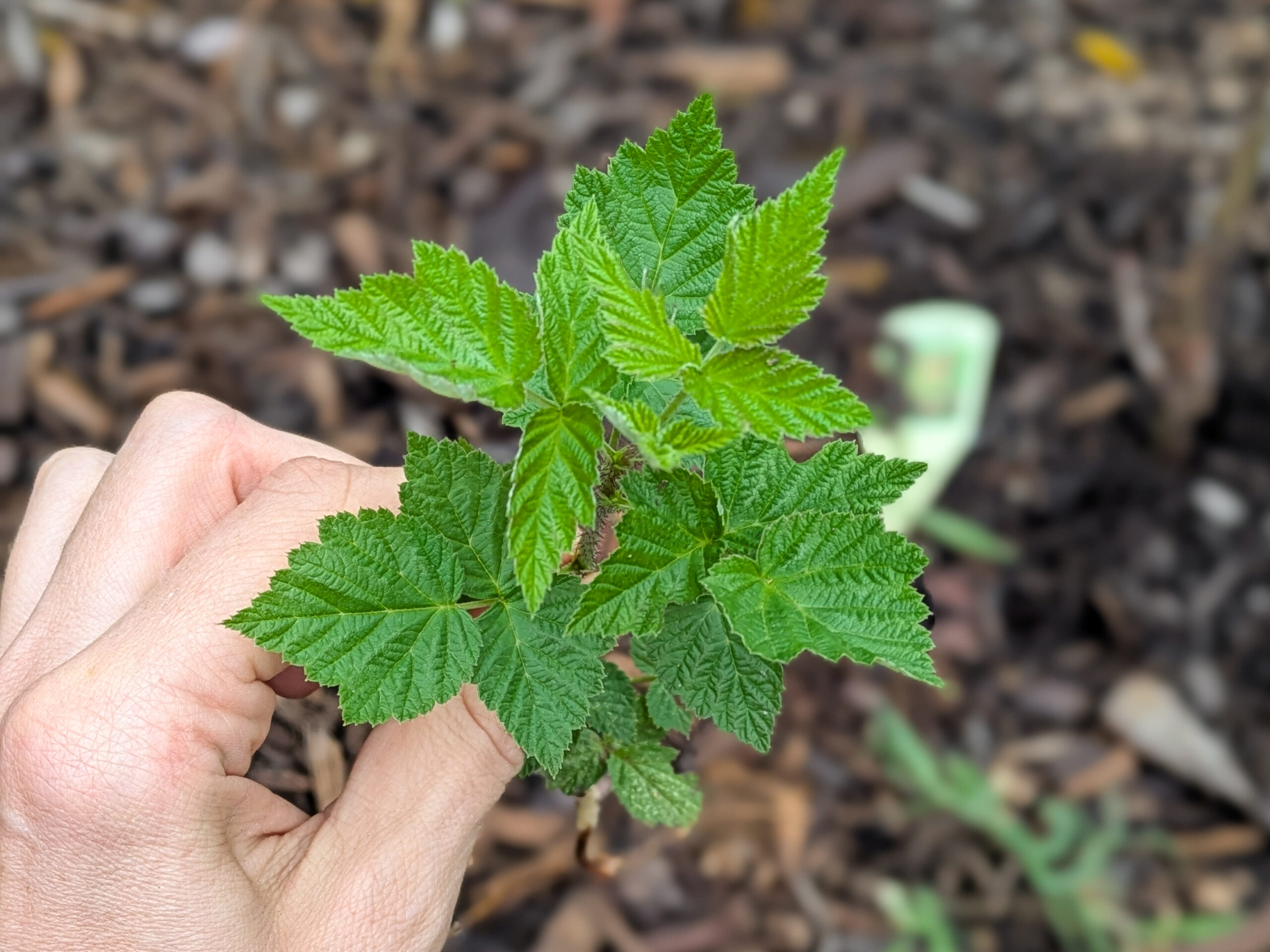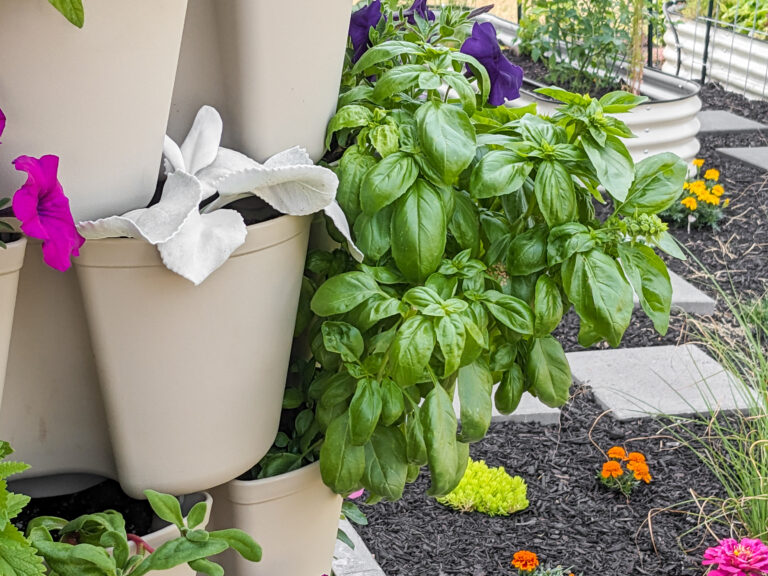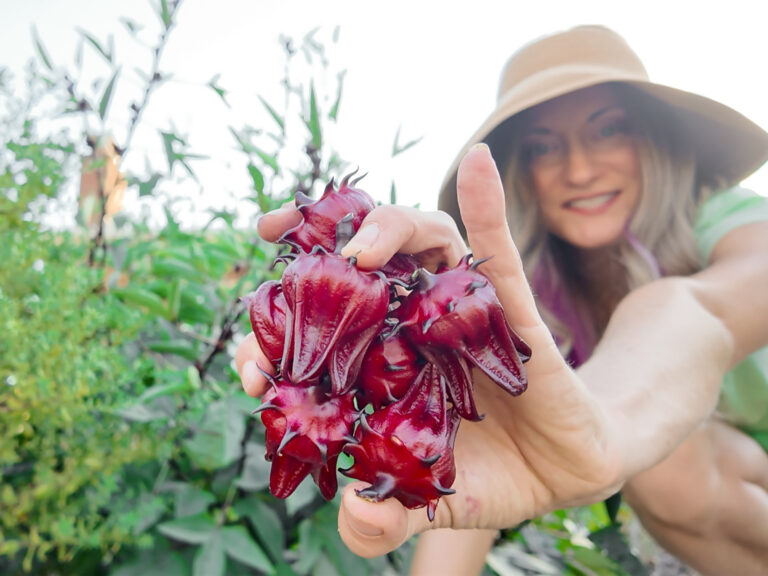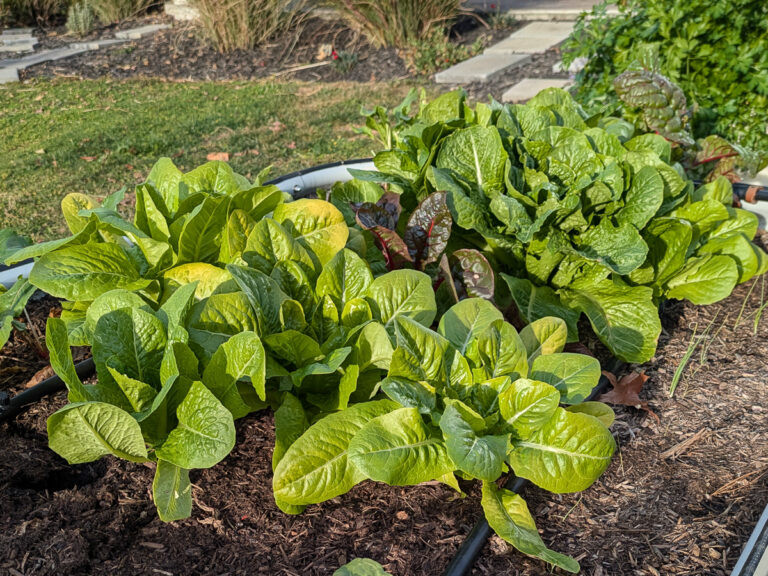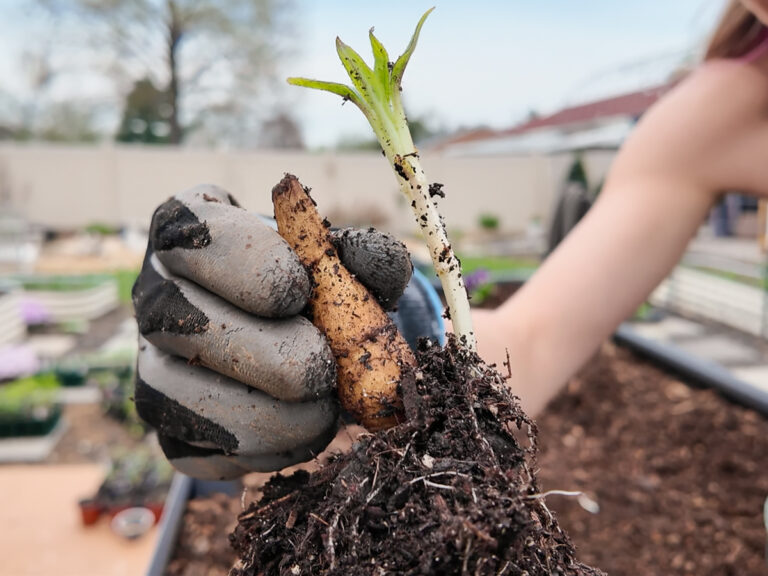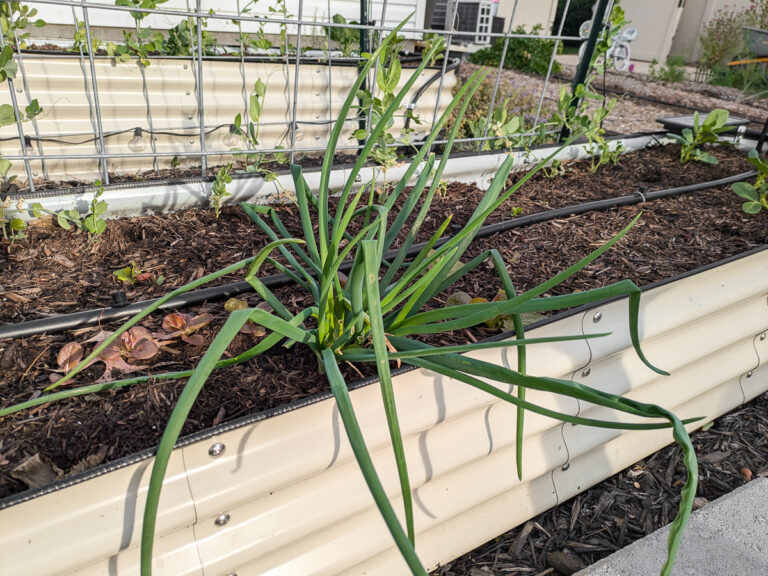How to Propagate Raspberries
Raspberries are one of my favorite fruits, and they can be pretty pricey to buy. Luckily they are some of the easiest fruits to grow! Unlike blueberries, the plants don’t take years to get established and start fruiting. And they are prolific growers!
Sometimes a bit too prolific, honestly. They can spread like crazy, which makes them a great plant to propagate and share. All you need is one friend with a raspberry patch, and you’re good to go! You can start your own, and before you know it, you’ll be passing along plants, too.
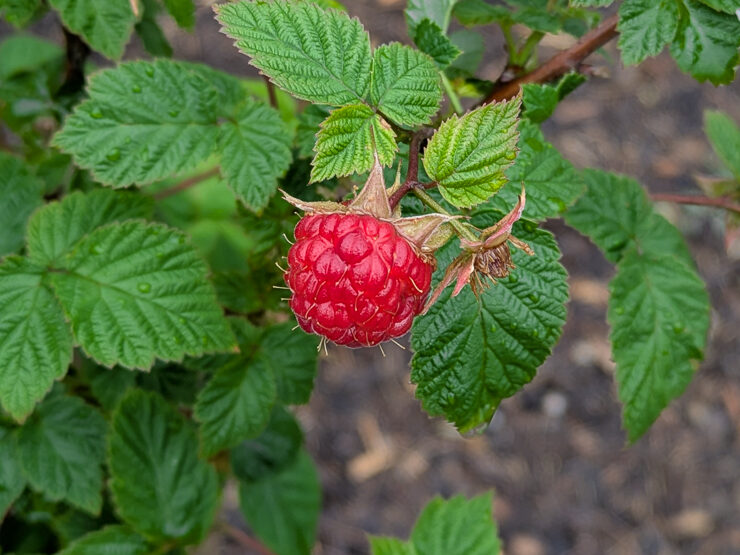
Our berry patch progress
We’ve been in the process of putting in a berry patch in the back of our yard for a while now. We put the blueberry bushes in first, followed by the raspberries. Most of them are propagations, too! We planted most of them last fall and then began converted the turf grass in the space to a mulched/wood chipped area.
Here’s a little before and after—me spreading leaves, paper bags, and compost over the area last fall after we planted everything. And then what it looked like this summer. It’s really starting to fill in nicely, and we even got a decent amount of berries this year

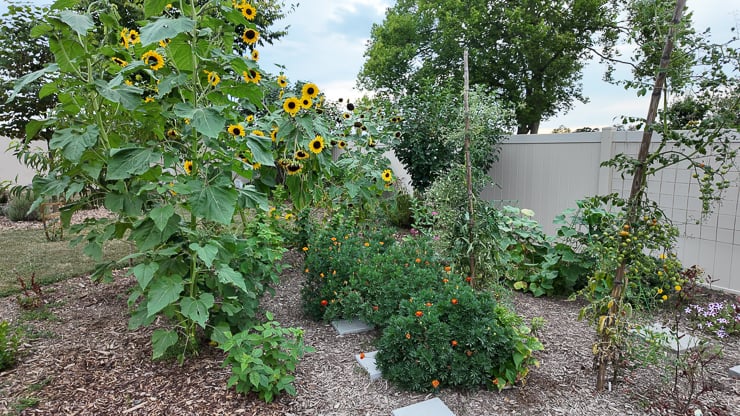
Raspberry growth patterns
Raspberries are brambles with a perennial root and crown, but their canes are biennial, meaning they live two seasons. Primocanes are first-year canes and grow vegetatively. Floricanes are second-year canes; they bear fruit and then die.
There are two main fruiting types of raspberries. Summer-bearing (floricane-fruiting) raspberries bear fruit on second-year canes. And usually the newer canes, too. Everbearing (primocane-fruiting) raspberries fruit only on first-year canes. Most of my raspberries are everbearing types. This is all important to know for propagating 🙂
Cane cuttings
The first raspberries we got were from canes in our neighbor’s yard. She no longer wanted the berry patch in the back of her yard because she is getting older, and it’s just become too much for her to handle. So I went over with a shovel and some buckets, and here we are!
I cut many of these down into smaller sections and planted them into smaller flats. But lots of them were already showing signs of “waking up” for the spring, so I let those be. My neighbor didn’t know what type of raspberries they were, so I just decided to keep some as is. I potted some up and pass them along to others, and some I just put right in the ground.
Most of the tall canes made it and even produced some fruit. Others didn’t do much at all, but they sprouted new growth from the base of the plant in the ground. My goal was to establish the patch this year, so I was fine with whatever growth I could get!
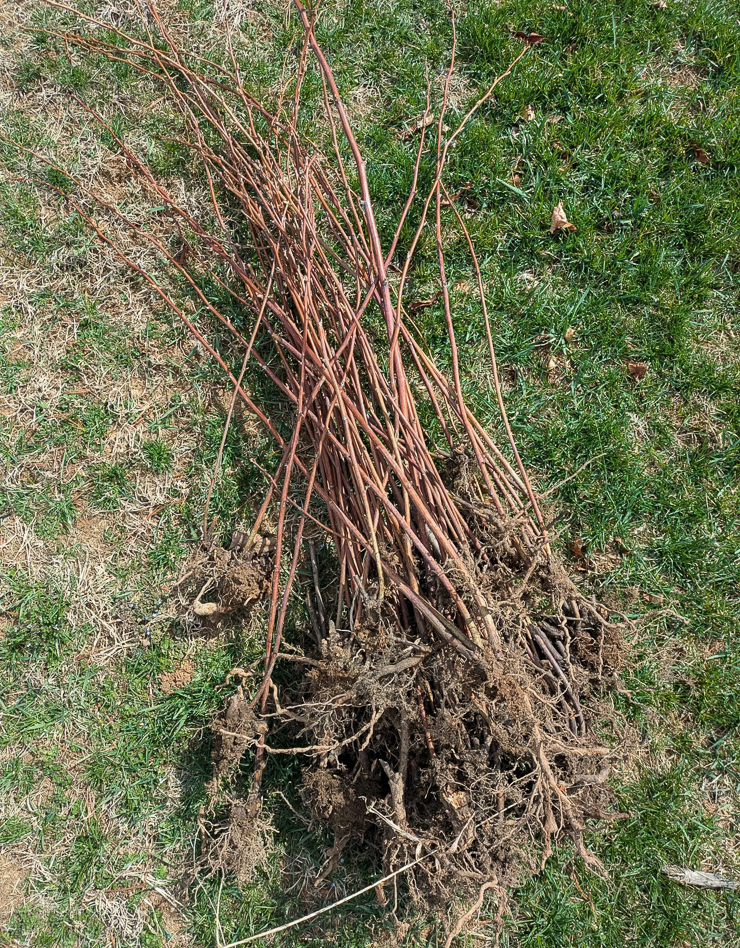
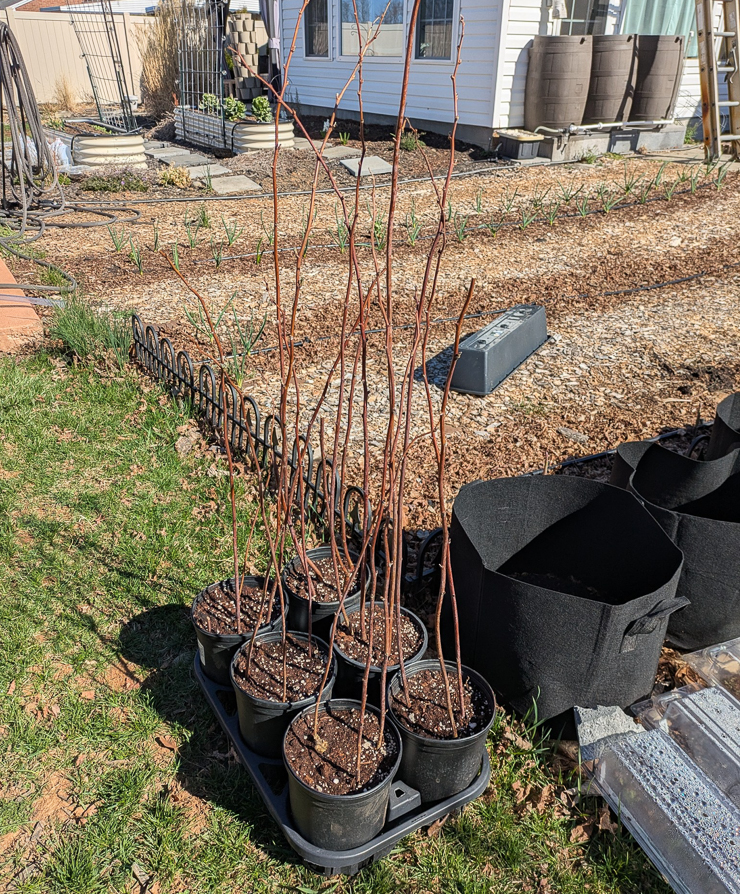
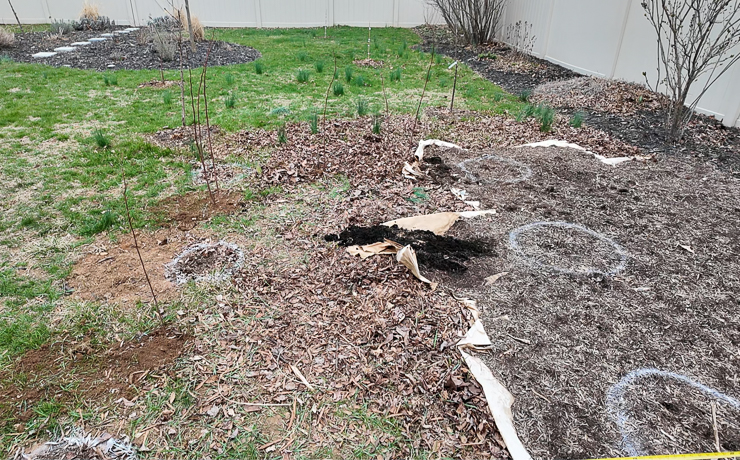
Digging up suckers
Raspberries will produce “suckers,” or baby plants next to the main plant. It’s how they spread like wildfire! One of the ways you can effectively control their spread and keep them contained is to dig up suckers.
When you dig these up, try to get a bit of the root system with it. Just a bit will help! Plant these in a small pot with well-draining soil, and keep it moist until the new plant is established.
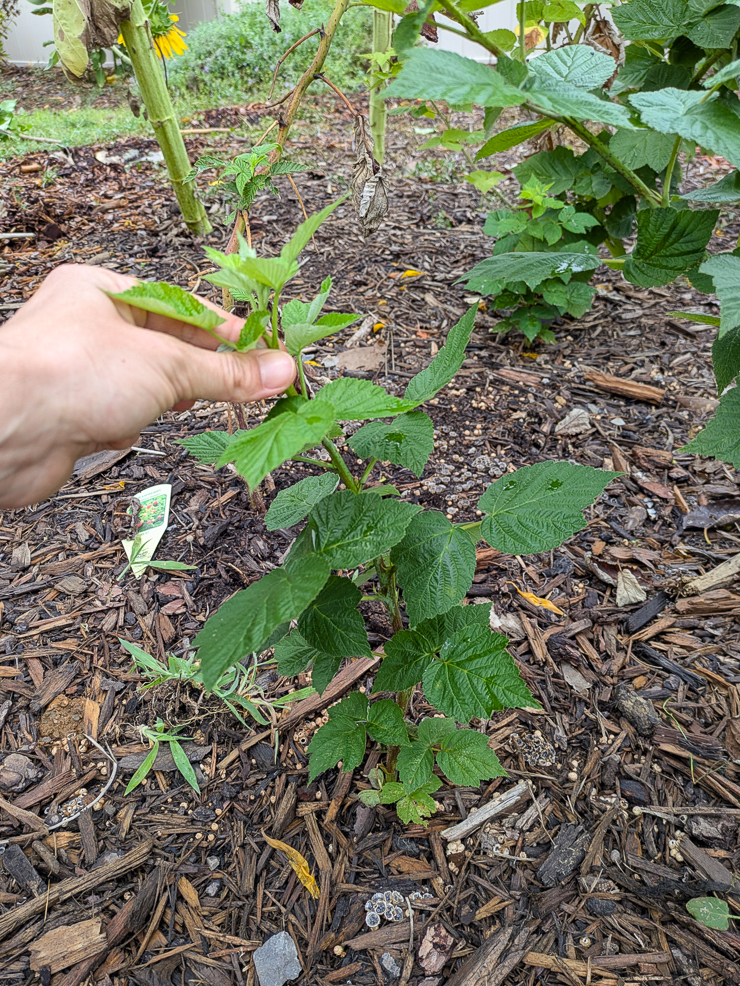
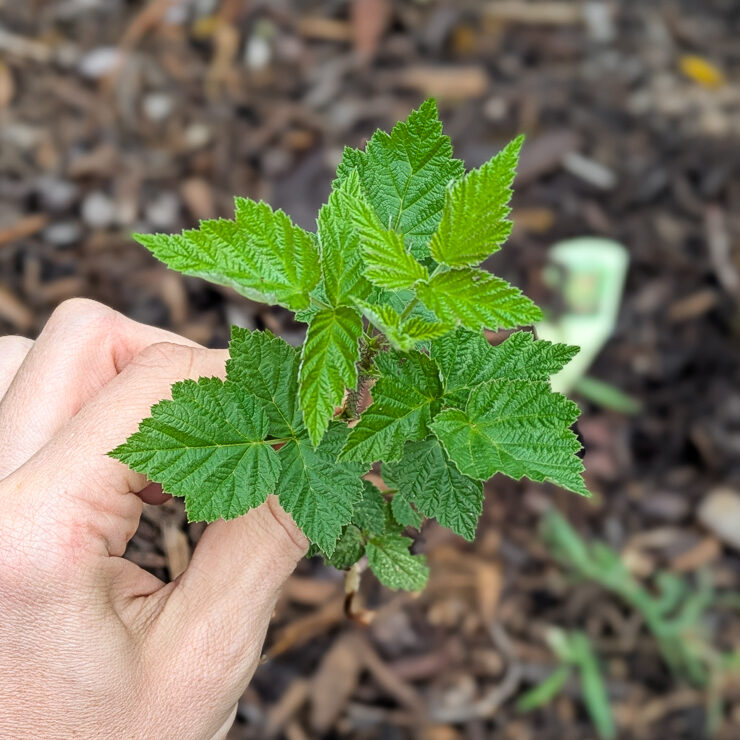

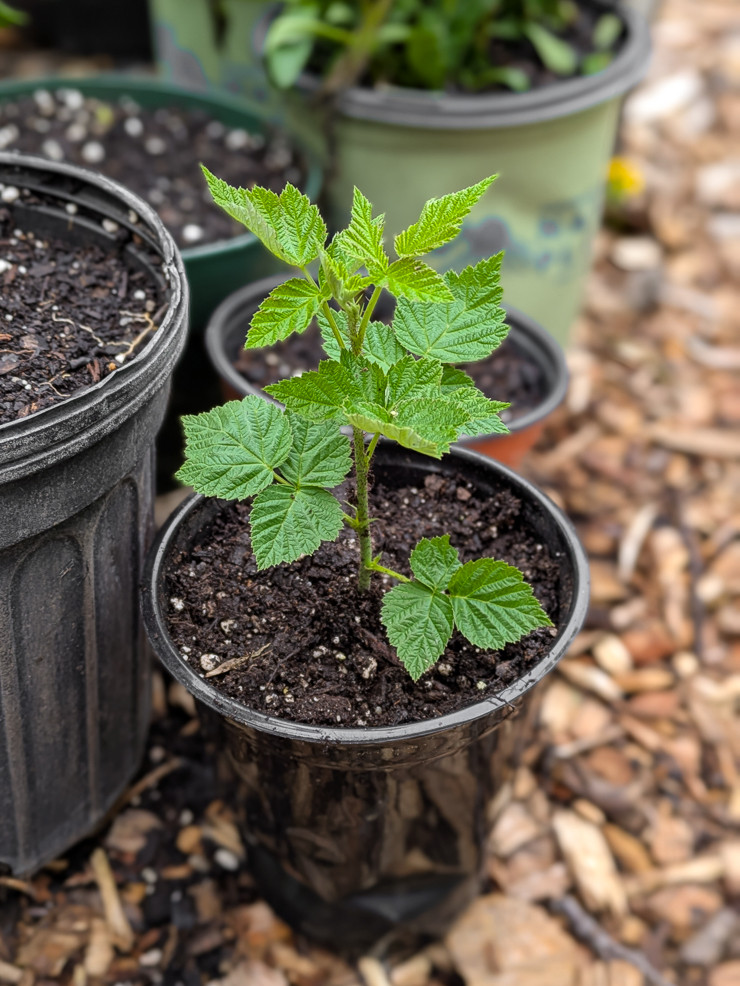
Tip layering
A similar method to digging up suckers is to essentially create your own sucker. You can do this by bending a primocane (first year cane with vegetative growth) down to the ground. You can use a landscaping pin or a rock to anchor it down. The plant will eventually sprout roots at the area where it meets the soil.
You can trim the new rooted plant off of the original stem and dig up the new baby plant just as you would a sucker. Pot it up separately and keep it moist.
Stem cuttings
Stem cuttings are a common way to propagate many plants. It’s not a super common way to propagate raspberries, though. Probably because it’s so easy to propagate raspberries through other methods. But propagating raspberries via stem cuttings is a viable way to get more plants!
This is especially good when digging up a plant isn’t necessarilly an option. Maybe you have a friend with a raspberry patch that they aren’t keen on digging up. Taking stem cuttings can be a way to grow new plants.
First take a primocane stem cutting. Make sure the stem is relatively thick like the one below. I’ve found that if the stem is too thin (usually with newer growth), it won’t be strong enough to root. Then cut that stem up into smaller pieces. Remove the leaves from the bottom of each stem but keep one set of leaves on the top.
Pop the stem into soil and keep it moist. Don’t worry if the leaves shrivel up and die off. As long as the stem roots, it will sprout new growth.
